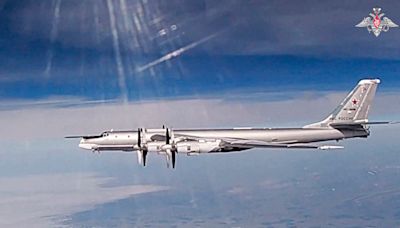Search results
- DictionaryWa·ter/ˈwôdər/
noun
- 1. a colorless, transparent, odorless liquid that forms the seas, lakes, rivers, and rain and is the basis of the fluids of living organisms: "sodium chloride dissolves in water"
- 2. a stretch or area of water, such as a river, sea, or lake: "the lawns ran down to the water's edge"
verb
- 1. pour or sprinkle water over (a plant or area) in order to encourage plant growth: "I went out to water the geraniums"
- 2. (of the eyes) become full of moisture or tears: "Rory blinked, his eyes watering"
Learn the definition of water as a noun and a verb, with synonyms, examples, and word history. See also related phrases, articles, and entries near water.
People also ask
What type of compound is water?
Why is water important?
What does water mean?
What does water mean in a sentence?
Water is an inorganic compound with the chemical formula H 2 O. It is a transparent, tasteless, odorless, and nearly colorless chemical substance. It is the main constituent of Earth's hydrosphere and the fluids of all known living organisms (in which it acts as a solvent).
- Overview
- Liquid water
- GeneratedCaptionsTabForHeroSec
Water is made up of hydrogen and oxygen, and it exists in gaseous, liquid, and solid states. Water is one of the most plentiful and essential compounds, occurring as a liquid on Earth’s surface under normal conditions, which makes it invaluable for human uses and as plant and animal habitat. Since water is readily changed to a vapour (gas), it can travel through the atmosphere from the oceans inland, where it condenses and nourishes life.
Why do cold water bottles and soft-drink bottles sweat?
A cold water bottle appears to sweat because it’s a cooling source for the water vapour in the layer of air that surrounds the bottle. Air that is relatively warm can hold more water vapour than cooler air. When the cold water bottle is introduced, the warm air near the bottle cools and some of the water vapour condenses into liquid water, which is then deposited on the outside of the bottle.
When does water boil?
Boiling occurs when bubbles form within a liquid, marking a change from a substance’s liquid or solid phase into a gas. The normal boiling point is the temperature at which the liquid’s vapour pressure equals the standard sea level atmospheric pressure (760 mm [29.92 inches] of mercury). At sea level, atmospheric pressure is high, and water boils at 100 °C (212 °F); at higher altitudes it is lower, so water boils at a lower temperature.
Why is water blue?
The water molecule is composed of two hydrogen atoms, each linked by a single chemical bond to an oxygen atom. Most hydrogen atoms have a nucleus consisting solely of a proton. Two isotopic forms, deuterium and tritium, in which the atomic nuclei also contain one and two neutrons, respectively, are found to a small degree in water. Deuterium oxide (D2O), called heavy water, is important in chemical research and is also used as a neutron moderator in some nuclear reactors.
Although its formula (H2O) seems simple, water exhibits very complex chemical and physical properties. For example, its melting point, 0 °C (32 °F), and boiling point, 100 °C (212 °F), are much higher than would be expected by comparison with analogous compounds, such as hydrogen sulfide and ammonia. In its solid form, ice, water is less dense than when it is liquid, another unusual property. The root of these anomalies lies in the electronic structure of the water molecule.
The water molecule is not linear but bent in a special way. The two hydrogen atoms are bound to the oxygen atom at an angle of 104.5°.
The O―H distance (bond length) is 95.7 picometres (9.57 × 10−11 metres, or 3.77 × 10−9 inches). Because an oxygen atom has a greater electronegativity than a hydrogen atom, the O―H bonds in the water molecule are polar, with the oxygen bearing a partial negative charge (δ−) and the hydrogens having a partial positive charge (δ+).
Hydrogen atoms in water molecules are attracted to regions of high electron density and can form weak linkages, called hydrogen bonds, with those regions. This means that the hydrogen atoms in one water molecule are attracted to the nonbonding electron pairs of the oxygen atom on an adjacent water molecule. The structure of liquid water is believed to consist of aggregates of water molecules that form and re-form continually. This short-range order, as it is called, accounts for other unusual properties of water, such as its high viscosity and surface tension.
An oxygen atom has six electrons in its outer (valence) shell, which can hold a total of eight electrons. When an oxygen atom forms a single chemical bond, it shares one of its own electrons with the nucleus of another atom and receives in return a share of an electron from that atom. When bonded to two hydrogen atoms, the outer electron shell of the oxygen atom is filled.
Water is a compound of hydrogen and oxygen that exists in three states and has many unique properties. Learn about the chemical structure, physical behaviour, and biological role of water, as well as its distribution and uses on Earth and beyond.
Learn the meaning of water as a noun, verb, and suffix, with usage examples and idioms. Find out how to pronounce water in British and American English, and explore related words and phrases.
Water definition: a transparent, odorless, tasteless liquid, a compound of hydrogen and oxygen, H2O, freezing at 32°F or 0°C and boiling at 212°F or 100°C, that in a more or less impure state constitutes rain, oceans, lakes, rivers, etc.. See examples of WATER used in a sentence.
Learn the meaning of water as a noun, verb and suffix, with examples of how to use it in different contexts. Find out the difference between water and waters, and explore related words and phrases.
Learn the various meanings and uses of the word water, from the clear liquid that has no color, taste, or smell, to an area of water, to methods of travel that involve boats and ships. See examples, synonyms, and related terms for water.


